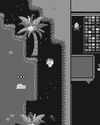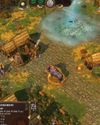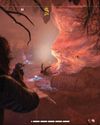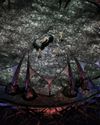
There’s a simple delight to JRPG character customisation. Extend that to an entire squad of characters on a tactical grid? Now you’ve got your classic strategy JRPG. Extend it to an entire army of several dozen squads? That’s the rework you get in Symphony of War: The Nephilim Saga. Setting out a buffet of customisation around your army is enough to shake up a genre that was becoming one-note – even if the generic story does it no favours.
Symphony of War’s spin on the strategy JRPG is all about the squad. Each squad is made up of as many as nine units, each placed into a formation that you create on 15 squares – and the boundaries between them – for about 15 distinct positions. Whereas other games emphasise single individuals, only the most powerful heroes can take on an enemy squad single-handed in Symphony. Instead of customising the precise stats of individual people, you decide the squad built around them, tweaking composition and class as you go, and pushing their leadership stat ever-higher to increase their max squad size. Equipment also goes to the squad, with powerful artefacts taking up both equipment slots and space that could be used for soldiers.
But despite all that complexity, it’s surprisingly easy to grasp. There’s a decent in-game reference manual, and while some in-depth mechanics and the precise effect of stats – or how some terrain works – aren’t very clear, it never feels like you’re held back by a lack of understanding.
NEED TO KNOW
WHAT IS IT?
This story is from the {{IssueName}} edition of {{MagazineName}}.
Start your 7-day Magzter GOLD free trial to access thousands of curated premium stories, and 9,000+ magazines and newspapers.
Already a subscriber ? Sign In
This story is from the {{IssueName}} edition of {{MagazineName}}.
Start your 7-day Magzter GOLD free trial to access thousands of curated premium stories, and 9,000+ magazines and newspapers.
Already a subscriber? Sign In

A New Dawn - The rise, fall and rise again of PC Gaming in Japan
The so-called 'Paso Kon' market (ie katakana's transliteration of 'Pasonaru Computa') in Japan was originally spearheaded in the 1980s by NEC's PC-8800 and, later, its PC-9800.

MARVEL: ULTIMATE ALLIANCE
Enter the multiverse of modness.

SLIDES RULE
Redeeming a hated puzzle mechanic with SLIDER

GODS AND MONSTERS
AGE OF MYTHOLOGY: RETOLD modernises a classic RTS with care

PHANTOM BLADE ZERO
Less Sekiro, more Wo Long: Fallen Dynasty

STARR-MAKING ROLE
Final Fantasy XVI's BEN STARR talks becoming a meme and dating summons

THIEF GOLD
Learning to forgive myself for knocking out every single guard.

HANDHELD GAMING PCs
In lieu of more powerful processors, handhelds are getting weirder

FAR FAR AWAY
STAR WARS OUTLAWS succeeds at the little things, but not much else shines

FINDING IMMORTALITY
Twenty-five years on, PLANESCAPE: TORMENT is still one of the most talked-about RPGs of all time. This is the story of how it was created as a ‘stay-busy’ project by a small team at Black Isle Studios